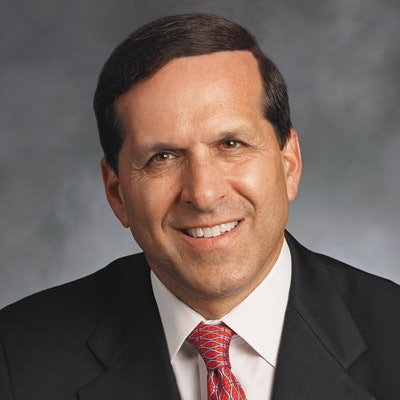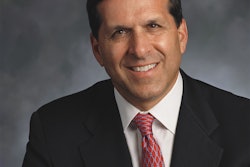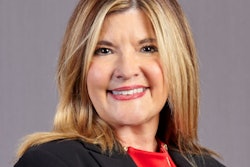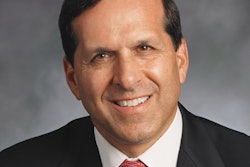
Dr. Roger P. Levin brings you the most thought-provoking topics from the Dental Business Study Clubs, an organization focused on the business of successful dentistry. Each month, Dr. Levin will explore an aspect of the business of dentistry in detail.
Dental practices are just like any other business. They can have steady growth, experience ups and downs, or be in a downward spiral. Sometimes, a practice can fall so far down that it's in danger of going out of business. The best strategy against this is, of course, prevention. However, as we all know prevention is remarkably easy in hindsight -- but what do you do when you're right in the thick of trouble?
Don't get emotional
 Roger P. Levin, DDS, is the executive founder of the Dental Business Study Clubs.
Roger P. Levin, DDS, is the executive founder of the Dental Business Study Clubs.If you find that you must turn around a practice in order to avoid going out of business, the first thing you must do is remove any emotion. We have repeatedly seen practices sink deeper and deeper into trouble when they cannot make objective decisions. Dentists who find themselves in this position have often commented that they felt too upset, attached, or loyal to doing what had to be done. Somehow, they thought that the practice will turn around by itself and they could avoid making the hard decisions.
Dentists can easily become very attached to certain equipment, materials, or companies, regardless of whether the pricing benefits the practice.
Ego can be another pitfall. It prevents some dentists from retrenching, lowering overhead, and getting smaller because doing so violates their image of their own success, even though they are in a declining mode. If you find yourself in trouble, pretend you're your own outside consultant who is objective and unemotional.
There are eight steps you can and must take quickly to increase production and profit. This is the only way to turn around a severely challenged practice.
- Cut all unnecessary expenses. Many dentists have told us that they have already cut all unnecessary expenses. However, their approach in evaluating unnecessary expenses is not nearly enough. We almost always find additional unnecessary expenses once discussions take place and analysis is completed. Cut every unnecessary expense and do it quickly.
- Cut necessary expenses. This is where it gets painful. If you've cut all unnecessary expenses and you haven't hit the overhead production number essential for a turnaround, then you must start cutting necessary expenses. Necessary expenses can include labor, technology, equipment, laboratory fees, and supplies. This is where emotion becomes a major factor. You might be thinking, "How can I change supply reps after I've worked with this person for 20 years?" or "I love my dental laboratory. How could I leave them?" Change your mindset. To get where you need to be, everything must be on the table. When you're in serious trouble, you can change anything if necessary to survive.
- Increase hygiene productivity. In most practices, dental hygiene is approximately 25% of practice production, and yet it is one of the most underutilized areas in the practice. Rather than simply being content with eight hygiene patients per day, work with the hygienist to identify patients with incomplete treatment or those who could benefit from elective treatment.
Also, implement a periodontal program ASAP. All of this can add tens of thousands (or in some cases hundreds of thousands of dollars) per year to a practice. - Increase the number of active patients. Overdue patients create no production and profit. Begin a campaign to contact every patient who is not currently scheduled. Your goal is to have at least 96% of these individuals scheduled as soon as possible. As soon as you begin this campaign, production and profit will go up if overhead is kept at the absolute minimum.
- Schedule all new patients within one week of their phone call. New patients offer the highest financial value to the practice and should be a strong focus for the front desk. The more new patients, the higher your production and profit will be so, as they say, time is of the essence. The faster you schedule new patients, the faster they get in and get diagnosed. The faster they get diagnosed, the faster they can accept and pay for treatment.
- Start all large cases within one week. When a patient accepts a large case, he or she often put off scheduling the first appointment for weeks. This slows production and profit and the patient may end up deciding to change his or her mind about treatment. To avoid this, all large cases should be scheduled within seven days.
- Collect all accounts receivable now. Practices should be paid as quickly as possible for the work that they do. However, as crazy as it may seem, we see severely troubled practices that still have large accounts receivable. This is money that is already owed to the practice and is simply sitting there. Practices in this situation should immediately begin a collection campaign and then tighten all collection systems. The best solution is to be paid at the time of the visit.
- Improve case acceptance production. Many practices in trouble follow the usual technique of identifying a large amount of single tooth dentistry. This is counterproductive to practice turnaround. Patients should be given a more comprehensive diagnosis which includes elective dentistry as well.
Summary
It's never pleasant to have a practice that's in trouble, but it's no time to get overly emotional. When there are challenges, you must be a strong leader who can be passionate about dentistry and dispassionate about the big business decisions. Putting your feelings to the side allows you to come up with clear, objective solutions, do what needs to be done, and focus on being successful.
Roger P. Levin, DDS, is the executive founder of the Dental Business Study Clubs. To contact Dr. Levin or to join the 40,000 dental professionals who receive his Practice Production Tip of the Day, visit www.levingroup.com or email [email protected].
The comments and observations expressed herein do not necessarily reflect the opinions of DrBicuspid.com, nor should they be construed as an endorsement or admonishment of any particular idea, vendor, or organization.



















